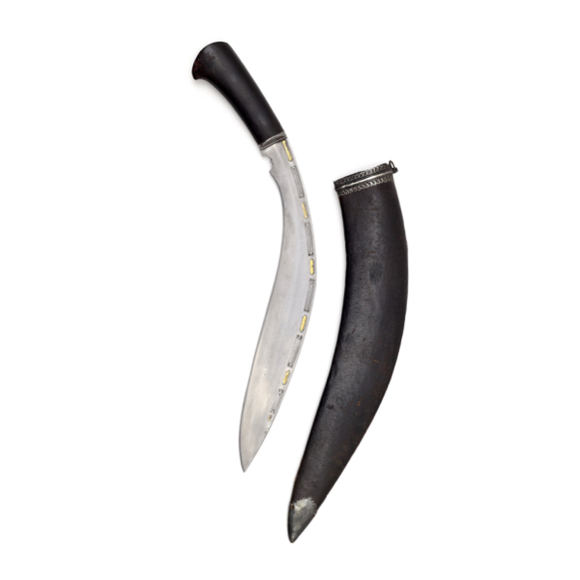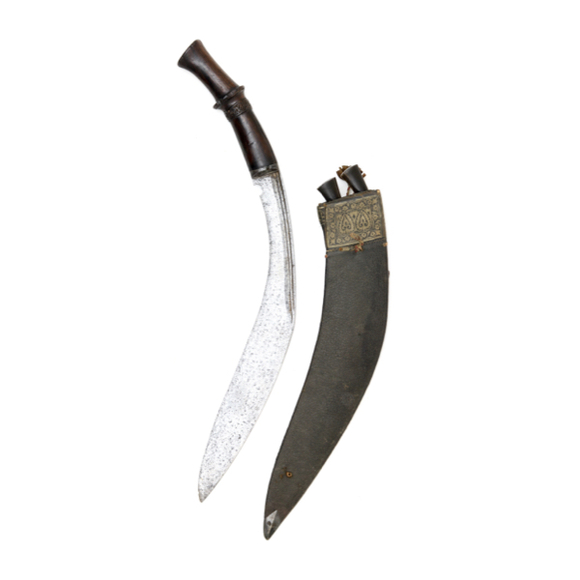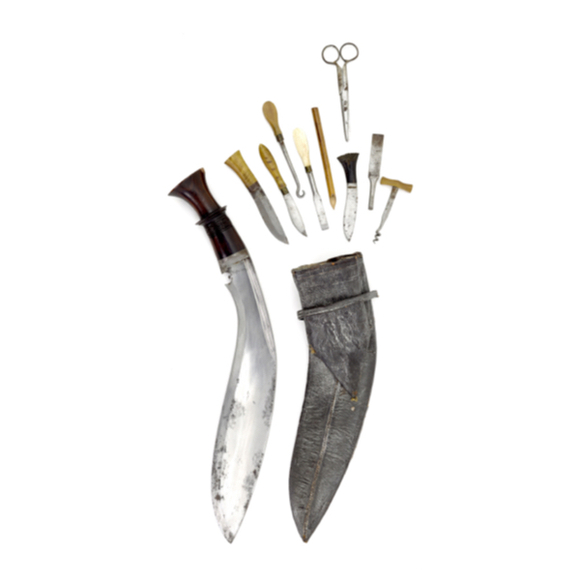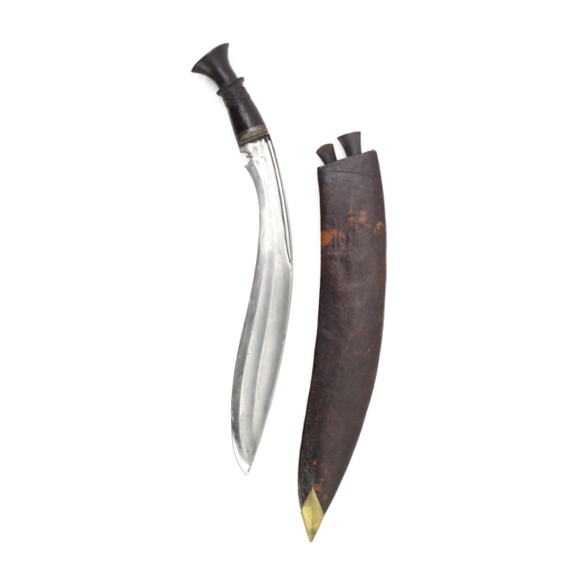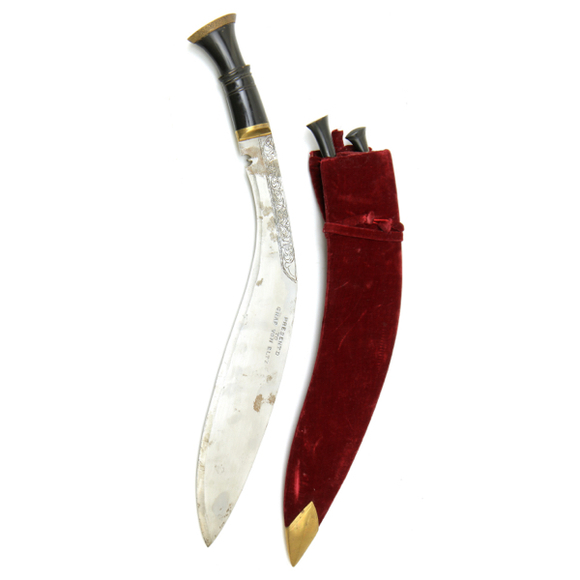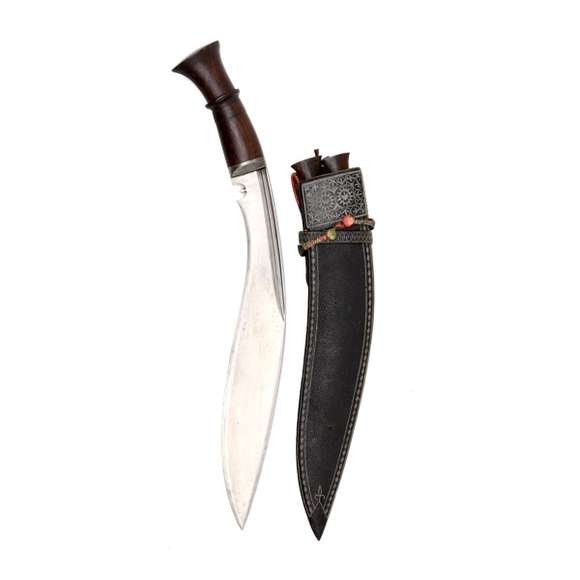Language: English speaking collector term based on Nepali
Source: In common use
Description
Chirra is used to describe the ridges between each groove on a khukurī blade.1
It is probably an alternative way of writing cirā (चिरा). According to Taylor, cirā is derived of cirnu, literally "To split, rip up, cut, lacerate". It is also used in the slightly different form, ciro (चिरो) to describe: "A splinter; cut, slice; (esp.) a slice of cucumber cut lengthwise." 2
Subtypes of khukurī based on cirā
Ang khola; A khukurī with a single fuller running along the spine. Proper transliteration: Āṅa khol (खोल् आङ);
Dui chirra; A khukurī with two fullers. Proper transliteration: Du'i cirā (दुइ चिरा)
Tin chirra; A khukurī with three fullers. Proper transliteration: Tīna cirā (तीन चिरा)
Among antiques, I have not yet encountered more than three cirā but among reproductions, blades with even up to five are made.

Āṅa khol (खोल् आङ)

Du'i cirā (दुइ चिरा)

Tīna cirā (तीन चिरा)
Further reading
For a complete overview of khukurī terminology, see my article: A Nepalese khukurī glossary.
Notes
1. I owe Jonathan Said for explaining that the chirra actually denote the ridges and not the fullers themselves. Personal communication.
2. Sir Ralph Lilley Turner; A comparative and etymological dictionary of the Nepali language. London: K. Paul, Trench, Trubner, 1931.
3. Resham Shercha, an ex Ghurka. Personal communication.

